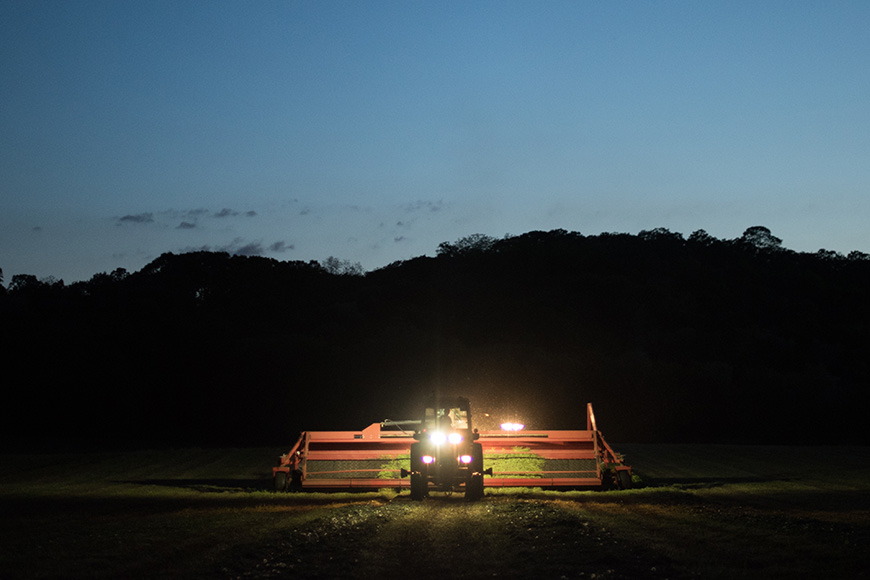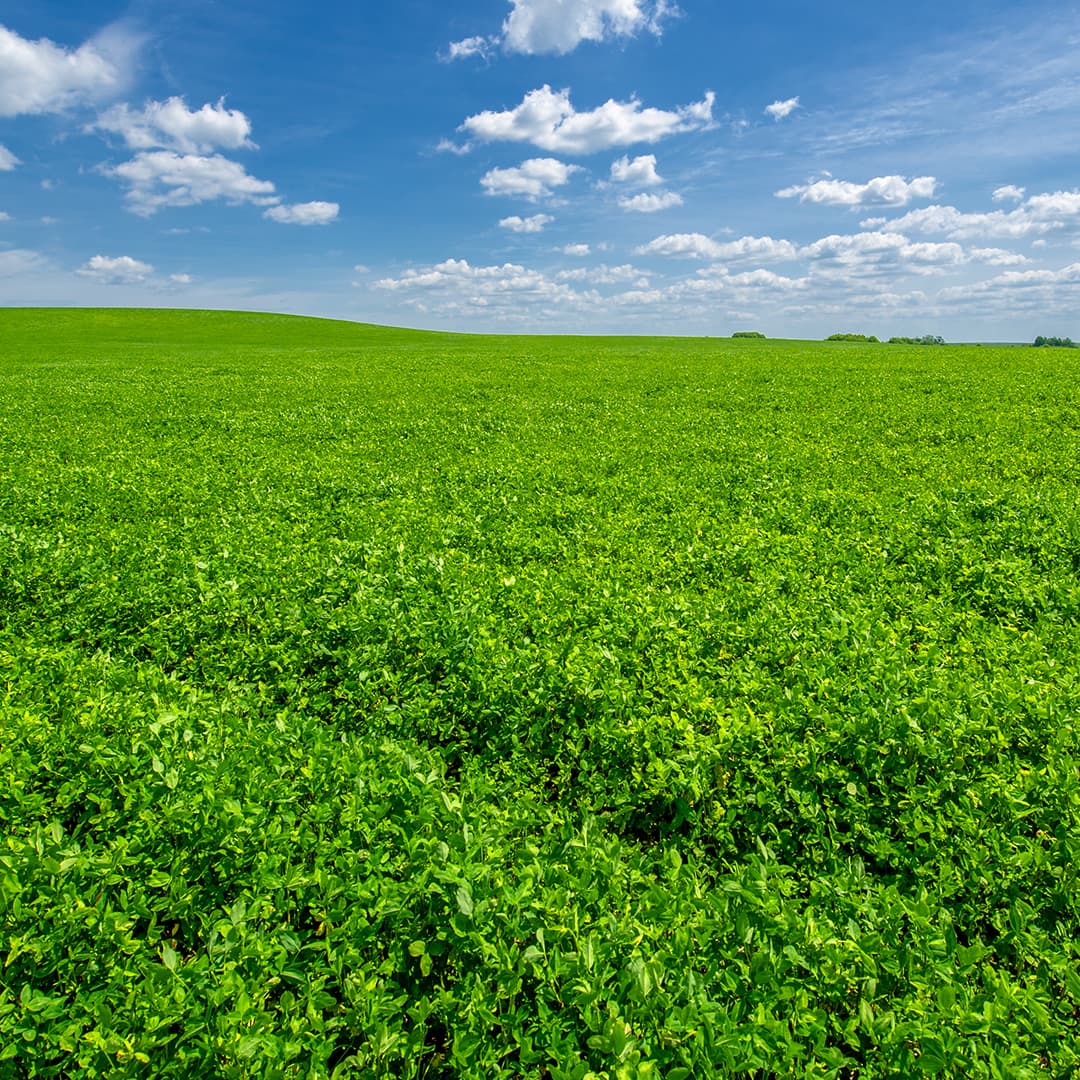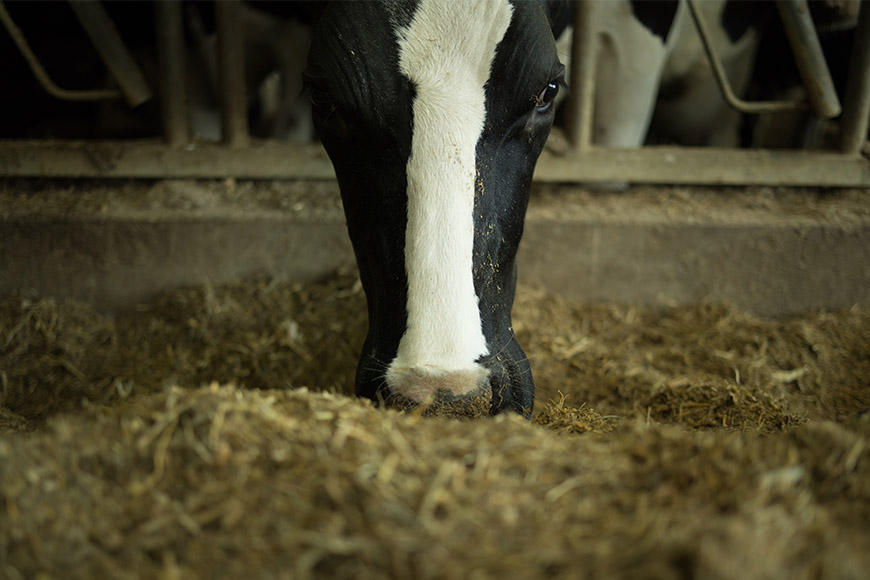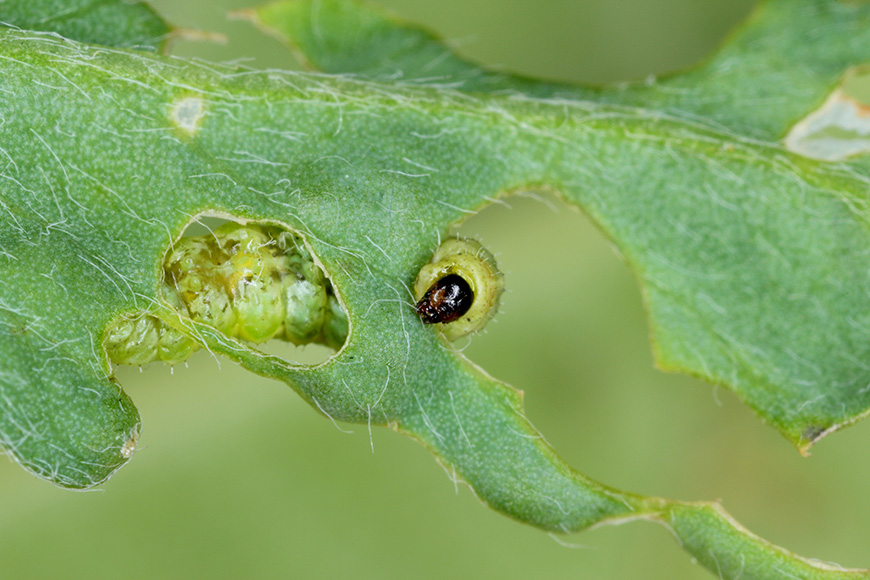Now, before the ground freezes and snow accumulates, is a good time to walk alfalfa fields and decide whether they are good enough to keep for next year, need some remedial action, or should be replaced. Both new (2018) seedings and established stands should be evaluated.
Evaluating 2018 Seedings
Farmers are generally seeding 60 to 120 seeds per square foot. Of the seed planted, 50 or more seedlings/sq ft usually emerge and then the stand to thins to 25 to 35 seedlings/sq ft by fall, regardless of seeding rate. The number of alfalfa plants/sq ft normally will decline to about 20 seedlings/sq ft after the first winter and continue to gradually thin over the life of the stand (as individual plants get bigger).
Less than optimum stands, with as few as 15 plants/sq ft this fall from a spring seeding, will still provide good yield for next year under most circumstances. These plants will likely have 3 to 4 or more stems per plant and be above the 55 stems/sq ft required to maximum yield (Fig 1). The stand will need to be evaluated for stems/sq ft in the future to determine if stand density is adequate for optimum yield. With less than 15 plants/sq ft, the stand will likely be low yielding and likely be weedy next year.
![]()
Before any remedial action is taken, I recommend trying to determine why the stand is less than desired. Some stands are poor due to weather conditions beyond our control but before blaming the weather consider the following:
If none of the above apply, we have seen some other causes of stand failure over the last couple years:
Another choice is to seed a grass into the thin alfalfa stand. Ryegrass or festolium can be interseeded for short term (1 year) benefit next spring. Tall fescue or meadow fescue can be interseeded either this fall or next spring if stand is to be kept for 2 or more years. Always be sure to choose grass varieties carefully for yield, rust resistance, medium to late maturity and winterhardiness.
Evaluating Established Alfalfa Stands
In early September, shortly after cutting, is a good time to evaluate stand density to make plans for next year. Simply count the cut ends per square foot and use Fig 1 to determine yield potential. Thin stands will have reduced yield next year equal to or less than that indicated in Figure 1.
As a second step, dig a few plants to examine the top six inches of taproot. Split the taproot vertically and compare to Table 1. Examining the roots in the fall will give an idea of winter survival potential and indicate whether the stand density will be similar next year (if rating 3 or less) or significantly less.
![]()
If the stem count is low and/or roots show significant rot to indicate likelihood of winter thinning, then consider turning the stand over. Remember that there is a rotational benefit of 15 to 20% corn yield increase when planted into fields previously in alfalfa. This should more than pay for the cost of reseeding.
Fall applications of herbicide are more effective than spring applications for killing alfalfa. Apply when temperature is >50o F to avoid reduced control by herbicide.
Evaluating 2018 Seedings
Farmers are generally seeding 60 to 120 seeds per square foot. Of the seed planted, 50 or more seedlings/sq ft usually emerge and then the stand to thins to 25 to 35 seedlings/sq ft by fall, regardless of seeding rate. The number of alfalfa plants/sq ft normally will decline to about 20 seedlings/sq ft after the first winter and continue to gradually thin over the life of the stand (as individual plants get bigger).
Less than optimum stands, with as few as 15 plants/sq ft this fall from a spring seeding, will still provide good yield for next year under most circumstances. These plants will likely have 3 to 4 or more stems per plant and be above the 55 stems/sq ft required to maximum yield (Fig 1). The stand will need to be evaluated for stems/sq ft in the future to determine if stand density is adequate for optimum yield. With less than 15 plants/sq ft, the stand will likely be low yielding and likely be weedy next year.
Before any remedial action is taken, I recommend trying to determine why the stand is less than desired. Some stands are poor due to weather conditions beyond our control but before blaming the weather consider the following:
- Was the soil pH at 6.8? Lower soil pH will inhibit growth; pH below 6 may inhibit germination.
- Was the soil firm at seeding and was it packed around the seed? Loose soil causes the seed to be unable to absorb sufficient soil moisture for germination.
- Did the seed get placed at the proper depth? Alfalfa seed need to be at ¼ to ½ inch depth; deeper seed will have reduced emergence. Five to 10 seeds/sq ft should be visible on the soil surface after seeding with a drill; if none are visible, then the rest of the seed likely went too deep.
- Did the stand come up in strips (from a drill) such that portions of adjacent rows have poor stands? This is generally indicative of poor seeding depth control and/or failure to pack the soil around the seed (especially if seed came up better in wheel tracks than in between them).
If none of the above apply, we have seen some other causes of stand failure over the last couple years:
- Was there herbicide residue? – note that some corn, soybean and wheat herbicides have a 12 to 24 month waiting period after application before seeding alfalfa is recommended.
- Was soil fertility adequate? In addition to phosphorus, potassium, and boron, many soils now need sulfur for adequate crop growth (due to reduced acid rain).
- Did the alfalfa variety have good aphanomyces race III resistance? Much of the country now has aphanomyces race III in the soil and lack of resistance can result in poor establishment.
- Was the cover crop removed quickly enough? Wet weather kept some farmers from harvesting the oats. Then slugs, potato leaf hopper, and other insects came in to damage the alfalfa seedlings. (One potential solution is to seed oats with the alfalfa for erosion and weed control and then spray with a grass herbicide or roundup (if a roundup resistant variety of alfalfa was planted) when the oats is 4 to 6 inches tall.)
Another choice is to seed a grass into the thin alfalfa stand. Ryegrass or festolium can be interseeded for short term (1 year) benefit next spring. Tall fescue or meadow fescue can be interseeded either this fall or next spring if stand is to be kept for 2 or more years. Always be sure to choose grass varieties carefully for yield, rust resistance, medium to late maturity and winterhardiness.
Evaluating Established Alfalfa Stands
In early September, shortly after cutting, is a good time to evaluate stand density to make plans for next year. Simply count the cut ends per square foot and use Fig 1 to determine yield potential. Thin stands will have reduced yield next year equal to or less than that indicated in Figure 1.
As a second step, dig a few plants to examine the top six inches of taproot. Split the taproot vertically and compare to Table 1. Examining the roots in the fall will give an idea of winter survival potential and indicate whether the stand density will be similar next year (if rating 3 or less) or significantly less.
If the stem count is low and/or roots show significant rot to indicate likelihood of winter thinning, then consider turning the stand over. Remember that there is a rotational benefit of 15 to 20% corn yield increase when planted into fields previously in alfalfa. This should more than pay for the cost of reseeding.
Fall applications of herbicide are more effective than spring applications for killing alfalfa. Apply when temperature is >50o F to avoid reduced control by herbicide.




